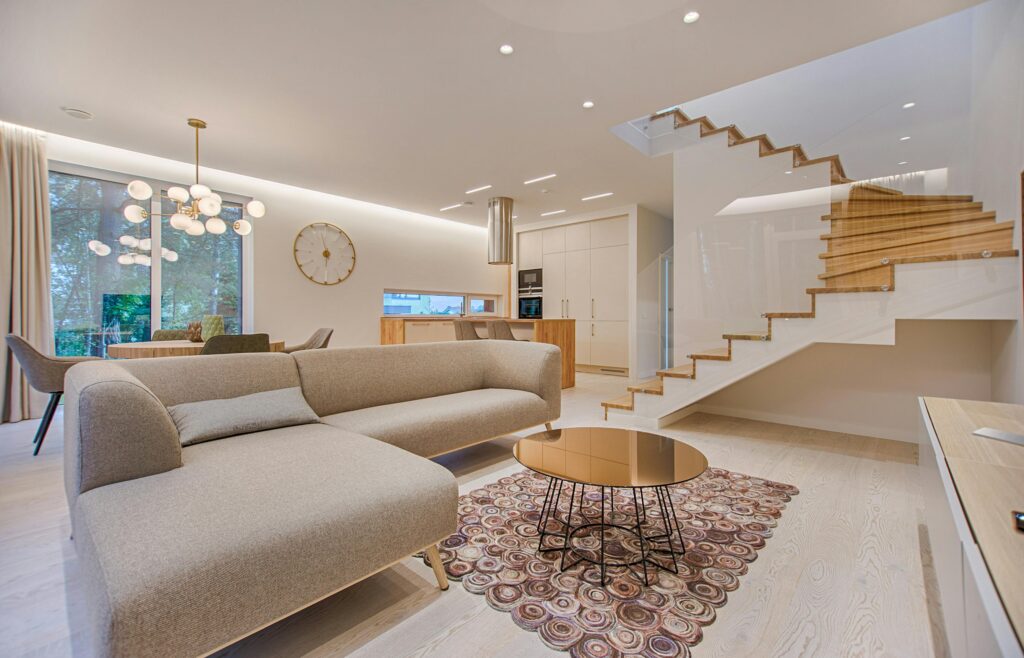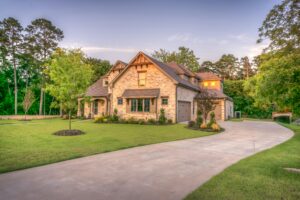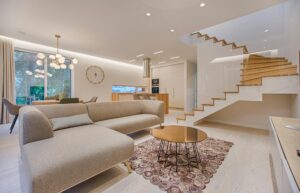
Interior design is an ever-evolving field that reflects the nuances of culture, technology, and individual tastes. As we navigate through the twists and turns of design, some trends burst into the scene, while others fade away. Understanding what is currently trending in interior design can help you create spaces that are not only stylish but also functional. It is also a fascinating and constantly evolving field that is influenced by various factors, including current values, technological advancements, and personal preferences. It is a dynamic landscape that is always in motion, constantly adapting to new ideas and innovations. In this ever-shifting realm, trends emerge and fade, giving rise to new possibilities and approaches to design. In this article, we will explore the hottest trends in the interior design world and identify those that seem to be losing their appeal.
1. Embracing Sustainability
As awareness of environmental issues grows, sustainability has become a significant focal point in interior design. Designers and homeowners alike are opting for eco-friendly materials and practices. Here are key components of this trend:
– Recycled Materials: Using reclaimed wood, recycled glass, and sustainable textiles is increasingly popular. These materials not only reduce waste but also add unique character to spaces.
– Energy Efficiency: Sustainable design emphasizes energy-efficient appliances and fixtures, helping to lower utility costs and reduce carbon footprints.
– Indoor Plants: Biophilic design, which integrates nature into living spaces, is gaining momentum. Adding greenery not only purifies the air but also enhances aesthetics.
READ ALSO: Amazing Deals on Home and Garden
2. Bold Colors and Patterns
Gone are the days of neutral palettes dominating interior spaces. As we move forward, bolder colors and patterns are making a significant impact. This trend allows for creativity and personalization, breathing life into homes. Some key points include:
– Vibrant Hues: Rich colors, such as deep greens, burnt oranges, and rich blues, are becoming staples in homes, whether in paint or furnishings.
– Eclectic Patterns: Layering prints is now a celebrated technique, allowing homeowners to showcase their personal style. Mixing floral designs with geometric patterns creates visually stimulating environments.
– Accent Walls: Chalkboard paint or wallpaper featuring bold designs can transform a simple space into an eye-catching focal point.
3. Minimalism and Multi-Functional Spaces
While bold colors are trending, the minimalist approach has not lost its charm. Many are leaning towards simple and clean aesthetics with an emphasis on functionality. This trend is particularly relevant due to smaller living spaces becoming the norm in urban settings. Key elements include:
– Decluttering: Minimalism embraces fewer items, focusing on quality over quantity. The concept of “less is more” helps create peaceful living environments.
– Multi-Functional Furniture: Furniture that serves more than one purpose, such as sofa beds or tables with storage, is in demand as it maximizes space without sacrificing style.
– Open Spaces: The trend towards open floor plans continues, allowing for flexible and adaptive spaces that can be tailored for various activities.
4. Technology Integration
The digital age has ushered in smart home technology, seamlessly integrating modern advances into interior design
The digital age has revolutionized homes with smart technology, enhancing interior design and transforming our interactions with living spaces. We can now automate lighting, temperature, security, and kitchen appliances, increasing comfort while saving energy.
Smart home tech syncs with smartphones for remote access, allowing us to check locks, get notifications, and start appliances remotely. Voice assistants like Alexa and Google Home simplify entertainment by controlling music and streaming services effortlessly.
Additionally, smart tech influences interior design with features like hidden speakers and touchless faucets, creating attractive and advanced spaces. In summary, smart home technology marks a new era of innovation, turning living spaces into intelligent environments with limitless future potential..
Homeowners are increasingly interested in how technology can improve functionality and comfort. Key aspects include:
– Smart Home Devices: From smart thermostats to automated lighting systems, incorporating technology can increase convenience and security.
– Sustainable Tech: Devices that promote energy efficiency, such as solar panels or smart meters, are also part of the modern design narrative.
– Home Office Integration: With remote work becoming commonplace, designing dedicated home office spaces that are both functional and stylish is essential.
5. What’s Fading Away?
While new trends emerge, it’s crucial to recognize what design elements are falling out of favor. As we move forward, the following trends are seeing a decline:
– All-White Everything: While previously popular, all-white spaces are giving way to more expressive colors and textures.
– Fast Furniture: The trend towards inexpensive, mass-produced furniture is waning as consumers focus more on sustainability and quality.
– Matching Sets: Gone are the days of perfectly matching furniture sets; individuality and personalization are taking precedence in the design world.
One prominent aspect of contemporary interior design is the emphasis on sustainability. As society becomes increasingly aware of the environmental impact of our choices, incorporating sustainable materials and practices into our living spaces has become a significant consideration. From eco-friendly furniture made from recycled materials to energy-efficient lighting fixtures, the aim is to create spaces that not only look beautiful but also minimize harm to the planet.
Another trend that is gaining popularity is the use of bold colors. Gone are the days of playing it safe with neutral tones; today’s homeowners are embracing vibrant hues to make a statement. Whether it’s a daring accent wall or an entire room painted in a striking color, injecting boldness into the design adds personality and liveliness to the space. It’s an opportunity to express one’s individuality and create an atmosphere that energizes and inspires.
In addition to aesthetics, functionality is a key consideration in modern interior design. People are increasingly seeking multi-functional spaces that can adapt to their changing needs. With the rise of flexible working arrangements and the need for adaptable living spaces, interior designers are finding innovative ways to optimize every square foot. From collapsible furniture and sliding walls to hidden storage solutions, the goal is to maximize usability without compromising on style.
Technology integration is another aspect that is influencing today’s design trends. Smart homes are becoming more prevalent, with advancements in technology seamlessly integrating with our daily lives. From voice-controlled lighting systems to wireless charging pads embedded in furniture, the merging of technology with design offers convenience and efficiency. It allows homeowners to effortlessly control various aspects of their home environment and enhances the overall experience of living in a well-designed space.
As trends continually evolve, it is crucial to remain open-minded and receptive to new ideas. While it’s important to be aware of the latest trends, it’s equally important to understand that not every trend will align with one’s personal aesthetic and lifestyle. Each individual has unique preferences and requirements for their living space, and it’s essential to choose elements that resonate with one’s personality and enhance their quality of life. By exploring different design concepts, consulting professionals, and staying updated on industry developments, homeowners can craft spaces that are not only visually pleasing but also comfortable and functional.
The world of interior design is an ever-shifting landscape that reflects current values, technological advancements, and personal preferences. From sustainability and bold colors to multi-functional spaces and technology integration, today’s trends are about creating spaces that are not only beautiful but also practical. As trends evolve, it is essential to remain open-minded while identifying what may no longer serve your aesthetic needs. As you embark on your design journey, consider which trends resonate with your personality and lifestyle while keeping an eye on what’s coming next in the world of design.
Conclusion
The world of interior design is a captivating realm that reflects the values and preferences of our time. From sustainability and bold colors to multi-functional spaces and technology integration, there is a wide range of trends to explore and incorporate into our living spaces. By staying open-minded and considering what truly resonates with us, we can create environments that are not only aesthetically pleasing but also aligned with our own unique vision and lifestyle. As we embark on our design journey, we should keep an eye on what’s coming next in the world of design, as it promises even more exciting possibilities and innovations for our homes.





